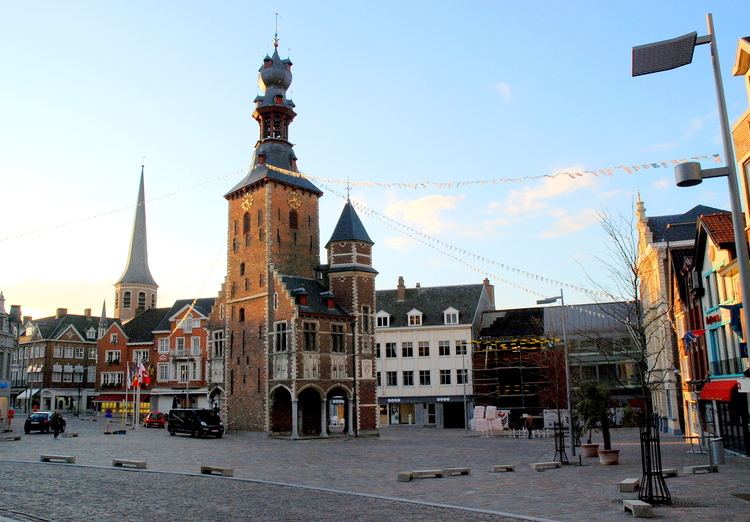Country Belgium Postal codes 8700 Postal code 8700 | Arrondissement Tielt Area codes 051 Population 4,572 (1 Jan 2007) Local time Friday 9:31 PM | |
 | ||
Weather 12°C, Wind SW at 6 km/h, 83% Humidity | ||
Tielt ( [tilt]) is a Belgian municipality in the province of West Flanders. The municipality comprises the city of Tielt proper and the towns of Aarsele, Kanegem, and Schuiferskapelle.
Contents
- Map of 8700 Tielt Belgium
- History
- Economy
- Sights
- Festivities
- People born in Tielt
- Twin towns Sister cities
- References
Map of 8700 Tielt, Belgium
History
Some traces of Gallo-Roman occupation have been found in this area. The area was invaded by the Viking Rikiwulf of the Wulfing dynasty in 880, who built Rikiwulfinga-haim, which survives as the Rijkegem-kouter today. The first written mention of Tiletum, however, dates from 1105, when Baldric of Noyon, Bishop of Tournai, awarded the right of presentment for the parish church to the chapter of St Salvator in Harelbeke. In 1245, Margaret of Constantinople, Countess of Flanders gave the city its charter and decided to found a hospital here. A few years later, a market place and cloth hall were built as well. Like neighbouring Roeselare, Tielt was made part of the Kortrijk province of Flanders. In the 13th and 14th century, the economy of most Flemish cities was based on the cloth industry, while the rural areas lived on the products of agriculture.
In 1393, Philip the Bold decided to hold an annual fair in Tielt, which resulted in the city becoming the booming centre of the flax industry until the end of the 16th century. The following decades, however, were hard on Tielt as it went through two major fires and a couple of epidemics, including the plague. Tielt also went through a severe famine at the end of the 17th century. From about 1700 until the Belgian Revolution of 1830, the city prospered again, this time as a regional center for the construction industry.
During World War I, the city became the headquarters for the German army. The bombing of the Second World War was a lot more destructive. Most of the city centre had to be rebuilt. Today Tielt is a typical province town, which offers commercial, medical and educational services to the surrounding region.
Economy
Industries:
Sights
Festivities
Every year, on the first week-end of July, the city celebrates the Europafeesten (feast of Europe). This is the occasion for a braderie (a street clearance sale), street theatre, a blues festival, fireworks, and of course, expanded café terraces for further merriment.
People born in Tielt
Twin towns — Sister cities
Tielt is twinned with:
